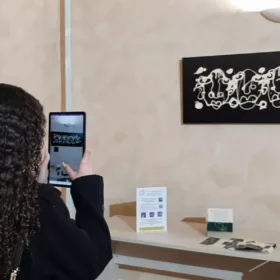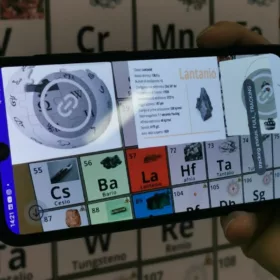In the era of digitization, augmented reality is emerging as a crucial technology for sustainability in business and industrial activities.
Augmented reality allows digital information to be superimposed on the real world, enhancing operational efficiency, reducing costs, and minimizing environmental impact. This is particularly relevant in the context of greenhouse gas emissions and achieving sustainability goals.
The current emissions scenario
According to the latest report from the European Environment Agency, road transport is responsible for over 22% of greenhouse gas emissions in Europe. Despite an overall reduction in emissions in the European Union of nearly 30% between 1990 and 2021, emissions from road transport increased by 21%, equivalent to 131 million tonnes of additional CO2. Most of these emissions (98.92%) are composed of CO2, with 70.6% coming from diesel vehicles and 25.4% from gasoline vehicles. Additionally, aviation, one of the fastest-growing sources of pollution, has seen a 146% increase in international emissions between 1990 and 2019.
In this context, Brochesia’s augmented reality solutions, such as B View and B Step, can play an important role in mitigating environmental impact.
B View and B Step: tools for sustainable innovation
B View is an augmented reality software that facilitates remote collaboration and technical assistance, reducing the need for physical travel. By using devices like smart glasses, or smartphones and tablets, operators can share their field of view with remote experts. These experts can then interact through advanced AR features, solving technical issues without travel or significantly reducing the need for it. This is relevant as an average flight produces 285 grams of CO2 per passenger per kilometer, while a car trip generates 42 grams of CO2 per passenger per kilometer. By reducing the need for travel, B View directly contributes to the reduction of greenhouse gas emissions.
B Step allows the creation and execution of digital workflows, including generating an automatic digital report at the end of each completed process, optimizing business operations and reducing the use of paper and physical materials. The standardization of processes through B Step not only improves efficiency and staff training but also minimizes errors, contributing to more sustainable resource management.
Benefits of Augmented Reality for Sustainability
Augmented reality solutions offer a range of significant benefits for sustainability:
- Reduction of emissions: The ability to collaborate remotely drastically reduces the need for business travel, a major source of CO2 emissions. For example, avoiding an unnecessary 1700-kilometer flight can save 484.5 kilograms of CO2 per passenger, while saving a 60-kilometer car trip can avoid 2.52 kilograms of emissions. These savings are crucial given the ongoing rise in emissions from road transport and aviation.
- Resource optimization: The digitalization of workflows with solutions like B Step reduces the use of physical materials such as paper, promoting more efficient and sustainable resource management. This approach not only reduces operational costs but also decreases the overall environmental impact of business operations.
- Operational efficiency and training: AR technologies enable the standardization of processes and minimize errors, enhancing operational efficiency. Additionally, the ability to record assistance and training sessions creates a knowledge archive that can be used for ongoing training, reducing the need for travel for on-site training.
- Waste reduction: The ability to monitor and analyze processes in real-time allows companies to identify and eliminate inefficiencies, reducing energy and material waste. This not only contributes to environmental sustainability but also enhances the economic competitiveness of companies.
Brochesia’s augmented reality solutions represent an important opportunity for companies to improve their environmental sustainability. Given the significant contribution of road transport and aviation to global greenhouse gas emissions, these technologies provide a concrete path to reducing environmental impact while simultaneously improving operational efficiency and resource management. Augmented reality thus emerges as a key technology for combining innovation and sustainability in the business world.
To learn more about B View and B Step and find out which model of smart glasses is best suited to your needs, contact us to schedule a demo!
Sources: European Environment Agency | Il Sole 24 Ore





